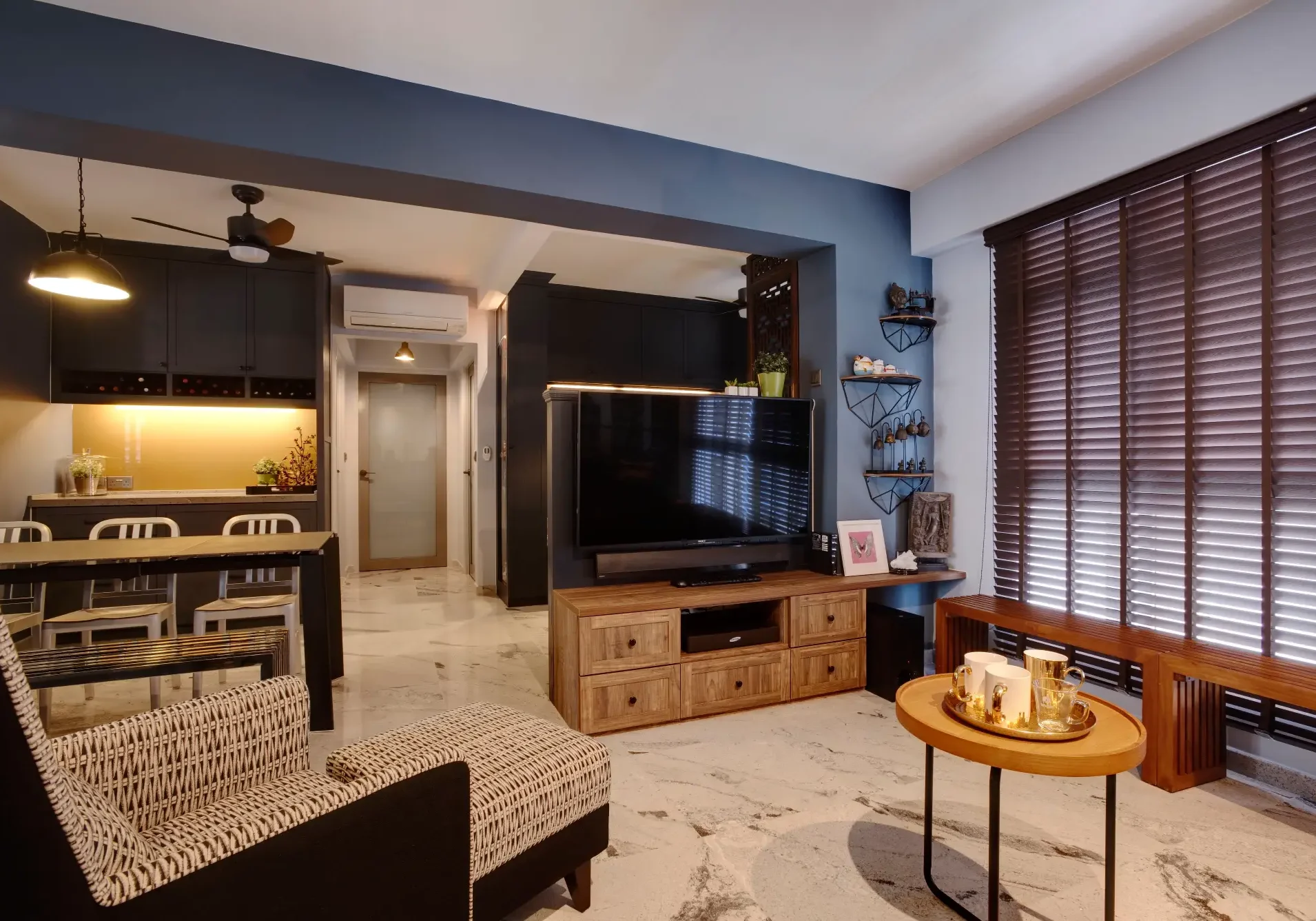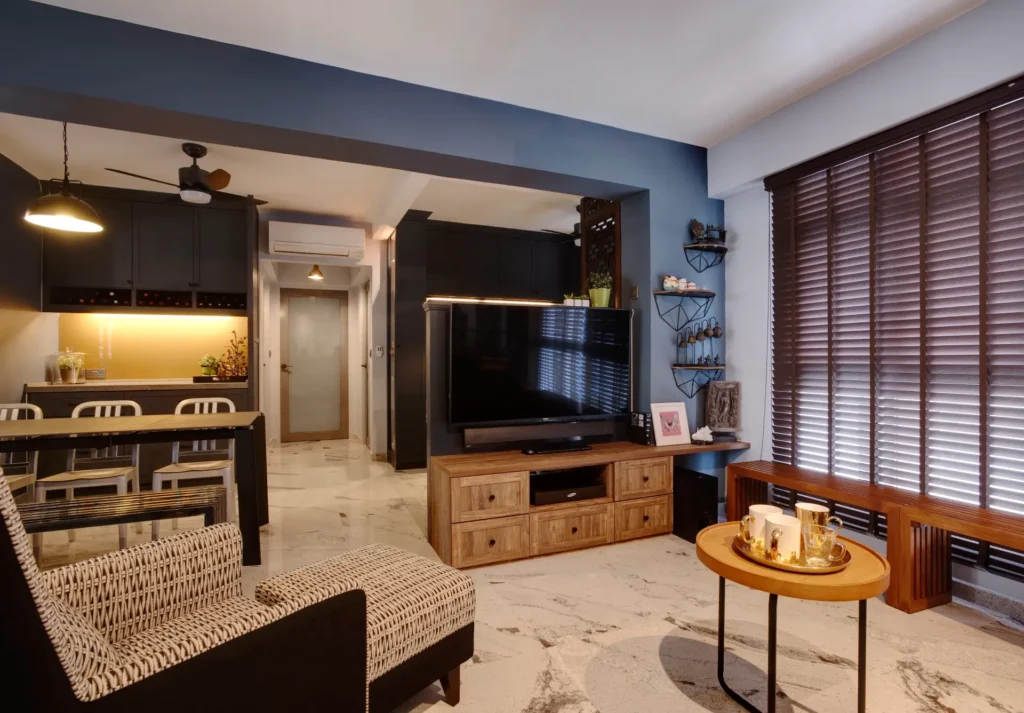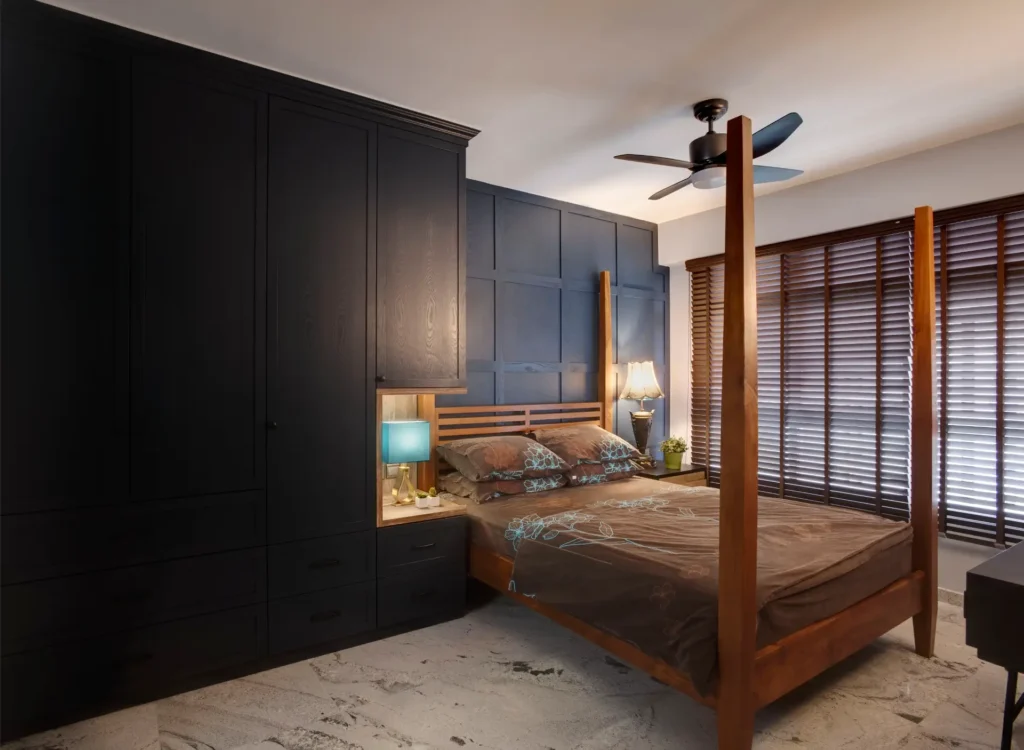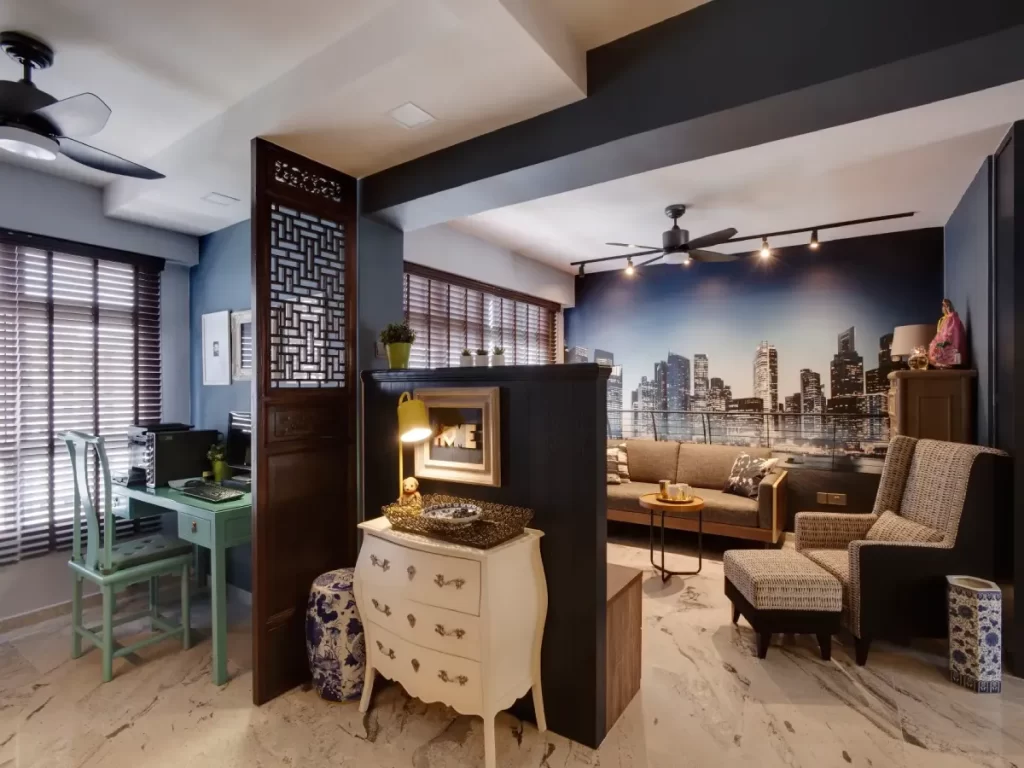Timeless Elegance: How Traditional Interiors Foster Wellness at Home

In this busy era, our homes mean much more than just sleeping and storage spaces. These places serve as spots for rest, comfort, and peace today. Moreover, how we live in our homes is affected by the design and type of furniture and interior design. Timeless vintage European aesthetics are regaining popularity in Singapore’s wellness-driven design culture. Harmony and healing are basic components of traditional interior design in Singapore. Traditional furniture is considered valuable because it is finely crafted, has a distinctive shape, looks attractive for years, and is suitable in a calm and cosy environment.
This article discusses how using traditional furniture and a traditional interior design theme, as depicted in the featured portfolio, helps to make a house more comfortable and cosy.

The Wellness Appeal of Traditional Interior Styles
The main principles of traditional interiors are symmetry, structure, and quality. These principles influence the mood in a room and shape our personal experiences.
A Sense of Stability and Order
Traditional spaces are organised evenly, with many symmetrical and well-scaled aspects. This way of organising elements takes the strain off the mind and gives it time to relax. With all the central parts of life in constant change, having a stable home gives us a sense of security. This shows why long-standing styles have a reassuring feeling and provide an emotional basis, while outside events are unpredictable. A similar ambience and sense of stability can be achieved at your workplace by opting for traditional office furniture.
Familiarity That Comforts
In Singaporean homes, colonial and Peranakan interiors provide a grounding connection to heritage, often by using traditional Chinese furniture design. The classic styles and outlines often remind people of the past. A wood armchair or armoire often gives off an antique and familiar feeling. Familiar surroundings usually lower people’s anxiety, calm them, and make it easier to feel part of and comfortable with where they are. This means multifunctional traditional furniture has not lost its value over the years.
Longevity Builds Trust
Traditional furniture is built to last. Crafted with solid wood and timeless upholstery, these pieces are designed to withstand the test of time, both in durability and style. Their classic appeal never goes out of fashion, making them a reliable foundation for any home. Investing in such enduring pieces creates a sense of stability and trust in your surroundings, contributing to a more grounded, comfortable, and harmonious family life. For example, traditional colonial interior design features strong, wooden 4-post beds that exude stability and a sense of belonging.

Creating Comfort with Classic Furnishings
The main component of well-being is comfort, and traditional furniture achieves this very well. It is made to hug your body and encourage relaxation.
The Embrace of Upholstered Seating
Overly filled sofas and high-seated armchairs are customary in traditional spaces. They are created so people can relax, read, and connect with others, all of which promote rest. The furniture is comfortable; the seats and cushions support the body and provide emotional comfort. This kind of sensation makes people feel comfortable and secure.
Encouraging Slowness and Stillness
Traditionally, a dining table, a writing desk, and a bookshelf are present in a traditional interior design. These things help us reflect on how we spend our time, such as meeting for meals and exchanging conversations. Unlike sleek designs, traditional objects motivate people to be present when using them. When we slow down, we learn to focus on ourselves, which has huge mental benefits.
Spaces for Gathering and Connection
Within a traditional home, central areas are usually furnished with things that help family members sit and interact. For example, arranging large sectionals, ottomans, and armchairs in a circle helps people communicate easily. This approach encourages socialisation, which significantly affects a person’s emotional health. Traditional home spaces value interaction, which makes us feel part of a community.
Natural Materials and Craftsmanship: Supporting Sensory Health
Furniture made of natural materials in traditional design is pleasing to the eye and easy on the senses. You can be comfortable and relaxed, thanks to these materials and the process by which they are made.
The Serenity of Wood
A warm and grounding space can be created with heavy pieces made of oak or mahogany. Using natural patterns and colours of wood provides a way to feel and observe nature. Touching and hearing the sounds of nature are linked to reduced stress and greater relaxation. The aroma and texture of wood provide a way for us to relax more fully.
Textiles That Soothe
Cotton, linen, wool, and velvet are the main breathable fabrics in traditional-style upholstery and bed linen. They allow for good bed warmth and ensure the skin is safe and comfortable during sleep. Since natural textiles do not undergo chemical procedures, they usually have fewer irritants. Fabric used in traditional armchairs or curtains can help improve the air quality in your home.
Quality Over Quantity
Every piece of traditional furniture that promotes mental wellbeing is known for its attention to detail in all stitches and finishes. For this reason, people often feel that it matters more and is cared for longer. When you have beautiful furniture, you experience less stress when buying new items and have greater satisfaction with your house. Because traditional furniture is made by skilled craftsmen, it carries emotion from its creation.

Tradition as a Wellness Anchor Through Heirloom Furniture
In most traditional homes, second-hand or antique furniture adds history and character to a room. Although they may look beautiful, these pieces also hold valuable memories and emotions.
Continuity Across Generations
When you use heirloom furniture, it joins the past, present, and future times together. An old rocking chair or a dining table kept in the family allows us to consider our family history. Familiar objects remind us of our family background and support us when uncertain. When you have your usual furnishings, your home can feel the same no matter the place.
Objects with Stories
Every mark or blemish on a traditional painting captures a story. Observing these things, we remember times with our family during holidays or bedtime as kids. Items with a background can help people deal with their emotions, recognise who they are, and appreciate where they come from. Adding these items adds emotion to the overall look of your home and promotes wellness.
Encouraging Sustainable Sentimentality
Unlike today, traditional interior design suggests reusing objects and treating them more respectfully. Purchasing only what we need and caring for our belongings helps improve our well-being. Fixing and renovating your furniture is a pleasant experience that helps you feel connected to your home. Adopting this mindset helps to make the home more caring, which is vital for a healthy future.
Designing Wellness Spaces with Traditional Touches
Thoughtful decoration and careful layout can ensure that anyone can introduce more traditional features into their home for better wellness. These choices support rest, focus, and emotional balance.
Carving Out Reading Corners
A reading nook can be created by adding a wingback chair, a warm lamp, and a small table. This type of home encourages us to relax and enjoy some alone time. It gives the mind a break and encourages the reader to read daily. A window in this corner allows more sunlight to brighten your home.
Bedrooms Designed for Restoration
Your bedroom can have a canopy bed, antique dressers, and soft fabrics, creating a soothing space. These elements surround the bedroom with a different atmosphere, making it quiet and peaceful. Standard furniture makes completing activities necessary for a good night’s sleep easier. Creating the proper ambience in your room lets you enjoy it as a wellness retreat.
Dining Rooms That Encourage Connection
The primary focus of a gathering and nourishment room is a classic, strong, and spacious dining table. A traditional arrangement motivates people to plan meals and be with their families or friends. Emotional bonding and having regular moments encourage health and wellness. Dressing the dining space in this manner reveals its role in daily living.

Conclusion
Traditional interiors for calming homes in Singapore focus not only on looking good, but also on strengthening your relationship with the place you live in. Besides making a home look stylish, traditional design adds comfort and familiarity. It allows kids to think more clearly, interact with others, and spend time in a safe environment. With so many changes and so much technology, classic interior designs can help restore balance. Homeowners who pick traditional wooden furniture that is related to their beliefs and aim to live healthily, spend money on appearance and wellness. Basically, timeless elegance ensures a space stays attractive and meaningful and provides comfort, peace, and a sense of kinship year after year.
FAQs
What is traditional interior design?
Traditional interior design is a classic and timeless style inspired by 18th- and 19th-century European decor. It features elegant furnishings, rich wood tones, symmetry, and detailed craftsmanship. Common elements include carved wood furniture, neutral colour palettes, layered textiles, and ornate details like crown mouldings and chandeliers.
How does traditional interior design aid mental wellness inside homes?
Being in traditional-styled spaces can make people feel more comfortable and lessen their anxiety. A symmetrical pattern, wooden materials, and old family furniture help to make a place feel calming. Thanks to these elements, daily life is less stressful and more peaceful.
Can old furniture designs work in modern homes without clashing with the contemporary style?
It is possible to match traditional furniture with a modern home by adding neutral colours and special touches here and there. When styled correctly, traditional design remains fresh and can easily complement modern buildings. Mixing styles preserves both beauty and health benefits.
How do traditional interiors with natural materials improve your health?
Wood, cotton, and linen are durable, let air in, and aren’t harsh on our skin. They help ensure that the air is clean and comforting for all. Adding them to your home will help you avoid irritants, sleep well, and feel better overall.